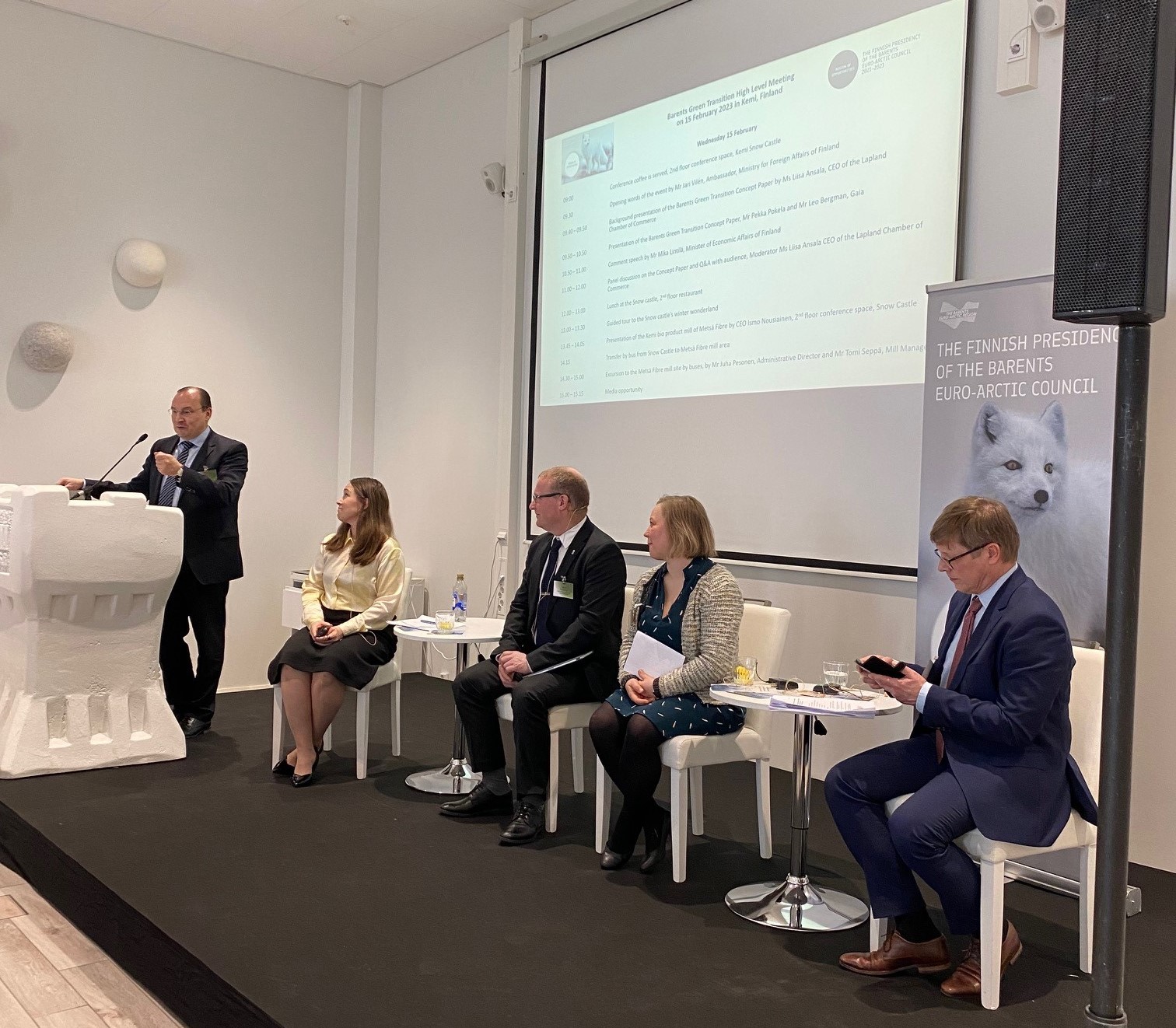The Barents Region’s green transition gets its own action plan

One of the flagship projects during Finland's Presidency of the Barents Euro-Arctic Council reached its zenith in February at an event held in Kemi’s SnowCastle, where the joint green transition action plan for the northern regions of Finland, Sweden and Norway was published. The action plan is based on a report produced by the Lapland Chamber of Commerce, according to which the potential for industrial investments in the northern regions of Finland, Sweden and Norway will be up to EUR 160 billion by 2030.
The geopolitical and economic importance of the Arctic and the Barents region increased further after Russia attacked Ukraine. At the same time, because of the war, the green transition has become increasingly acute throughout Europe. In particular, raw materials, such as rare minerals, from northern regions play an increasingly important role in the European Union's self-sufficiency and security of supply.
In his speech, Minister of Economic Affairs Mika Lintilä, to whom the programme was submitted, stated that the programme is also consistent with the EU Green Deal’s industrial plan, which was just recently published by European Commission President Ursula von der Leyen.
Minister Lintilä listed the wind power and battery industry projects included in the programme as well as the bioproduct mill valued at more than EUR 2 billion which is about to be completed Kemi as examples. The guests at the programme's launch event were also able to visit Kemi-based mill. Minister Lintilä estimates that up to 90 per cent of Northern Finland's investments support the green transition.
Minister Lintilä believes that the programme was completed at a good time, as the current government can put it on its own agenda and after Finland’s parliamentary elections the new government will then implement the programme.
In his speech, Minister Lintilä invited the Swedish and Norwegian Governments to participate in joint efforts to implement this green transition programme prepared for the specific needs of northern regions.
Availability of skilled labour force a cross-cutting bottleneck
The challenges identified in the action plan that are facing the Barents Region include the availability of labour, raw materials and energy. The solutions proposed include cooperation to increase the appeal of the area, which includes investing in services, affordable housing, comfort and the adaptation of foreign workers. In addition, the harmonisation of road transport regulations, joint lobbying to influence EU decision-making, determined efforts to secure EU funding for cross-border projects, joint promotion of work-related immigration to all countries in the region and the faster processing of green industry permit processes are all necessary. The action plan emphasises the need to also pay attention to the rights of the Sámi people, and it highlights the responsibility of countries in safeguarding negotiation processes and legislation. The action plan for a green transition funded by the Ministry for Foreign Affairs has been prepared by the Lapland Chamber of Commerce in cooperation with Gaia Consulting Oy.
Click on the link below to view the action plan:
Action plan for the green transition in the Barents Region(Link to another website.) (Opens New Window)
